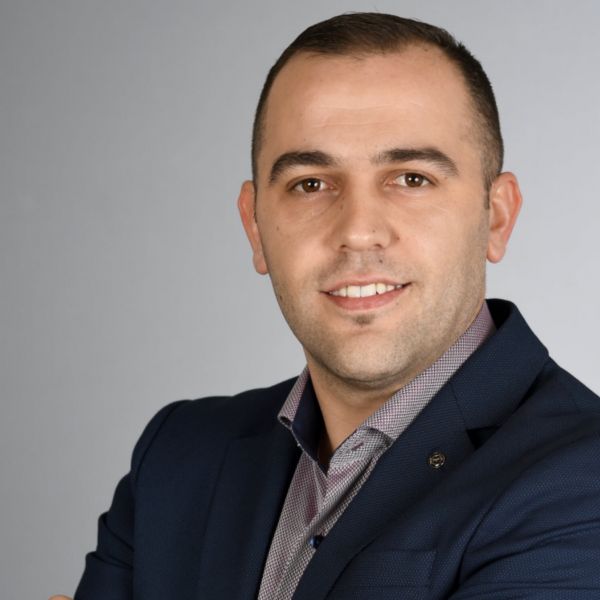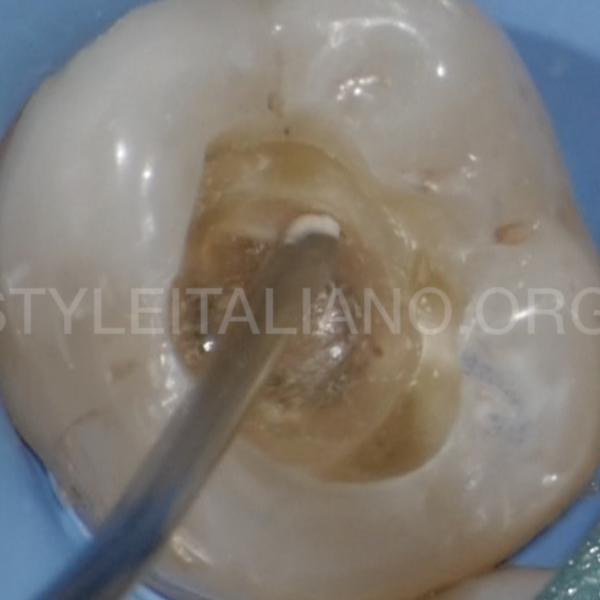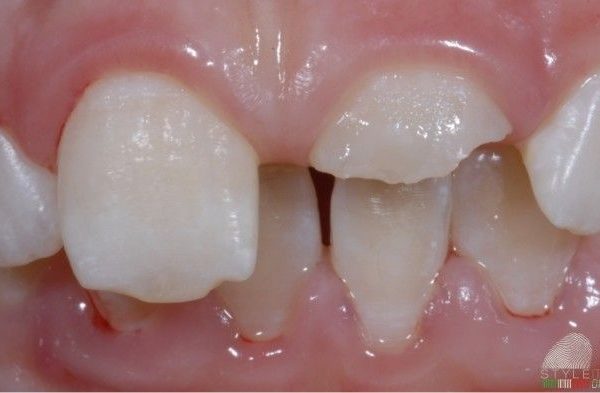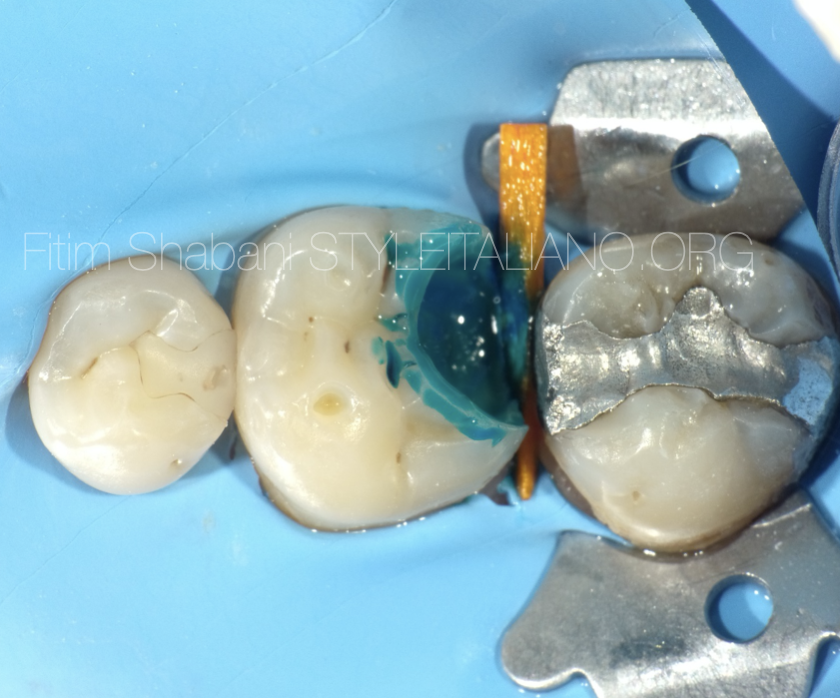
Direct pulp capping
07/01/2021
Fitim Shabani
Warning: Undefined variable $post in /var/www/vhosts/styleitaliano-endodontics.org/endodontics.styleitaliano.org/wp-content/plugins/oxygen/component-framework/components/classes/code-block.class.php(133) : eval()'d code on line 2
Warning: Attempt to read property "ID" on null in /var/www/vhosts/styleitaliano-endodontics.org/endodontics.styleitaliano.org/wp-content/plugins/oxygen/component-framework/components/classes/code-block.class.php(133) : eval()'d code on line 2
A direct pulp capping is a procedure in which a medicament is placed directly over the exposed dental pulp, with the specific aim of maintaining pulp vitality and health (Camp and Fuks, 2006; Hilton, 2009; Mente et al., 2010).
Advantages of a successful direct pulp capping are numerous, including the avoidance of more extensive treatment, such as root canal treatment or extraction.
Calcium hydroxide (CaOH) has been considered the “gold standard” of direct pulp-capping materials for several decades (Baume and Holz, 1981; Camp and Fuks, 2006; Hilton, 2009). While a new cement (mineral trioxide aggregate, MTA) has become a popular alternative.
Direct pulp coverage is a minimally invasive procedure, to perform this type of treatment we must first evaluate the case based on clinical and radiographic data, whether a direct pulp coverage or a root canal treatment is needed.
In this case report I will present all the steps to be followed to carry out this treatment
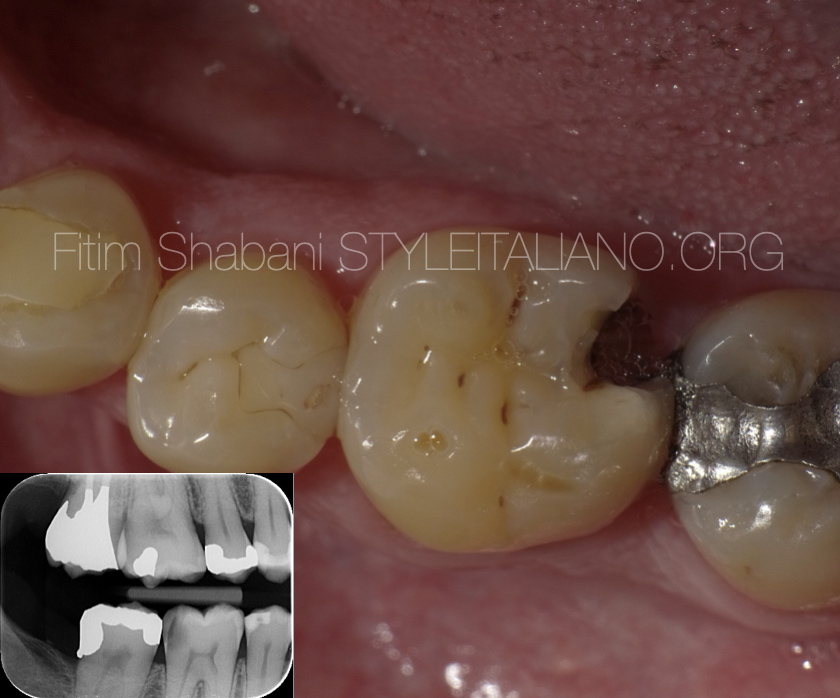
Fig. 1
Clinical data
Initial situation
Age 37 years old
The lower first right molar with deep caries
The patient`s complaints were, hypersensitivity to thermal stimuli
Tooth vitality ++
Negative percussion

Fig. 2
After anesthesia we initially did the isolation of the operative field

Fig. 3
After removing the carious masses we applied caries detector
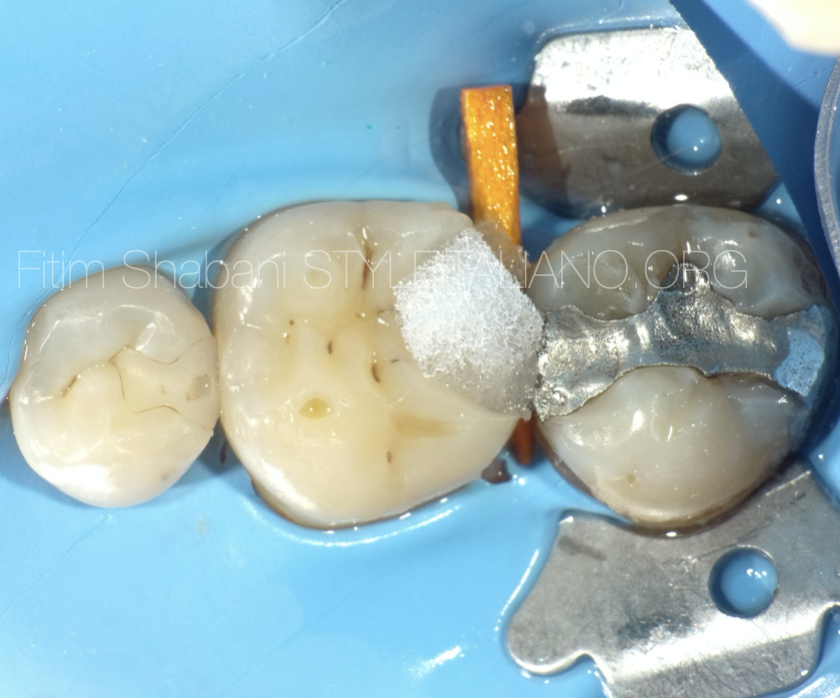
Fig. 4
Disinfection with CHX 2%

Fig. 5
Application of selective matrix
Exposed pulp
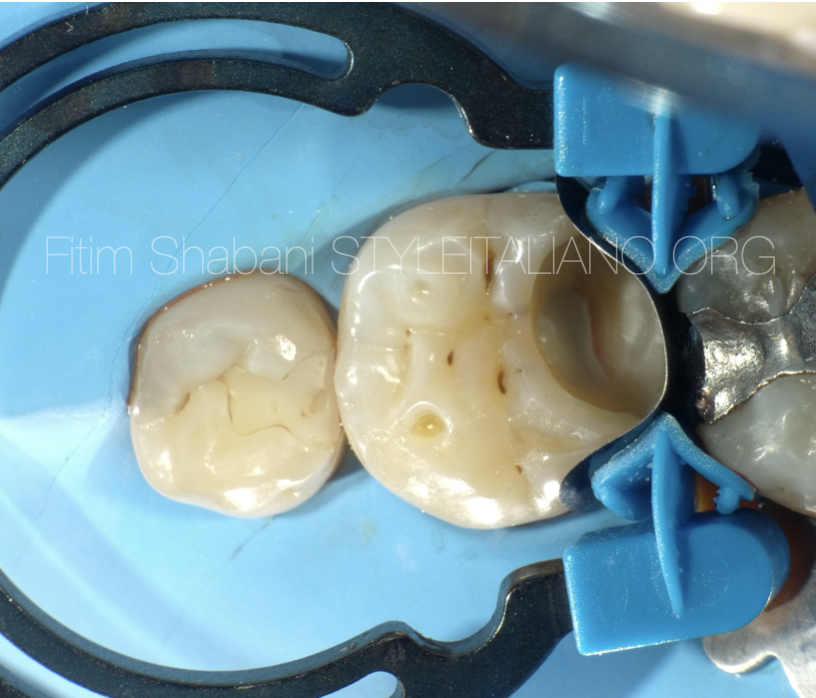
Fig. 6
Direct pulp coverage with Mineral Trioxide Aggregate (MTA) and dentin liner
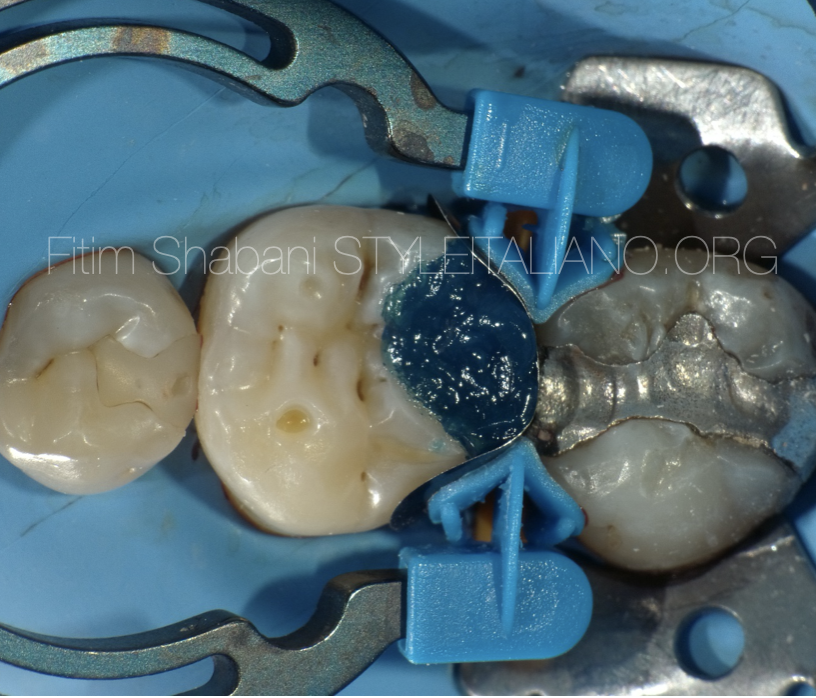
Fig. 7
Etching

Fig. 8
Build up of the distal wall with composite
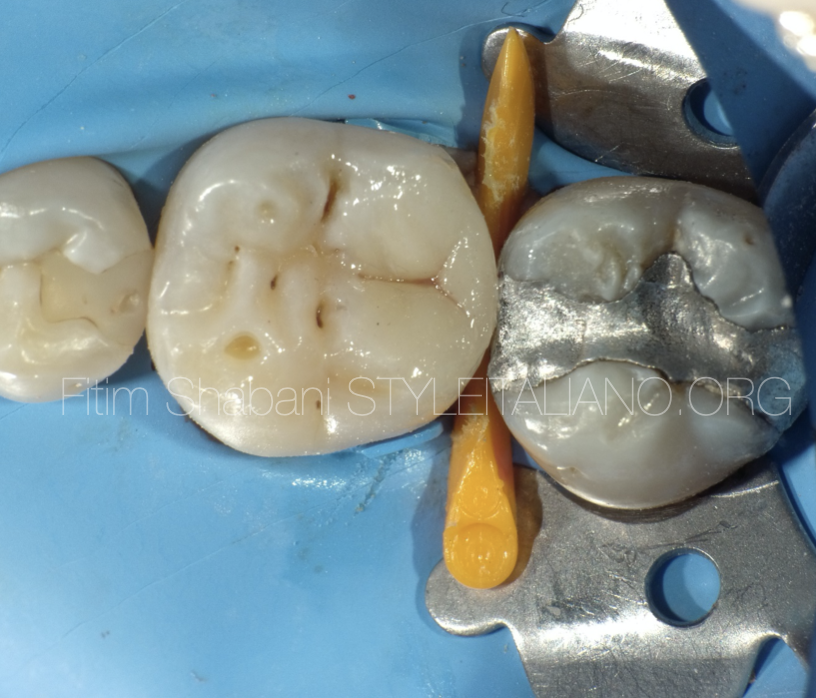
Fig. 9
Composite build up of the occlusal surface of the tooth
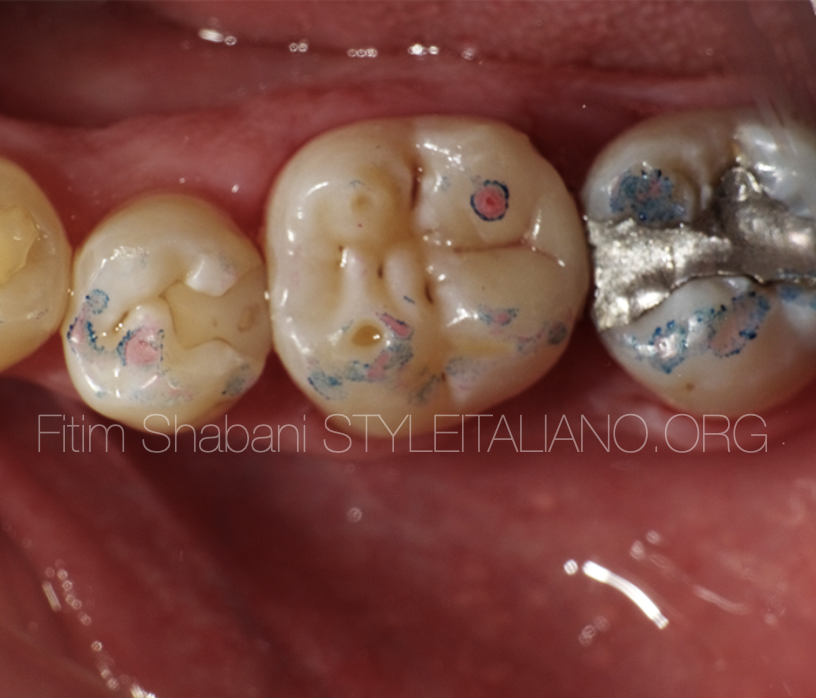
Fig. 10
Control of the occlusion
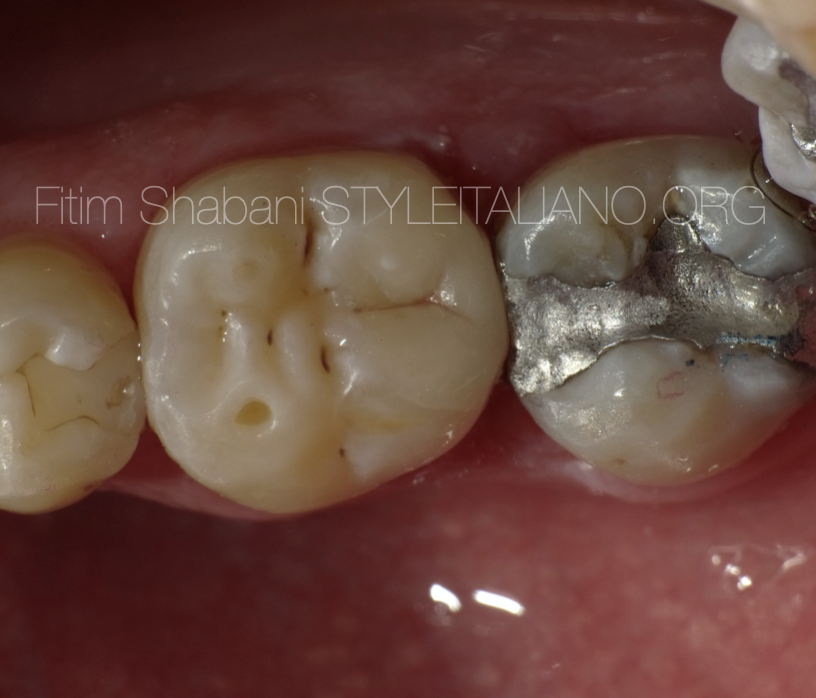
Fig. 11
Finishing after polishing
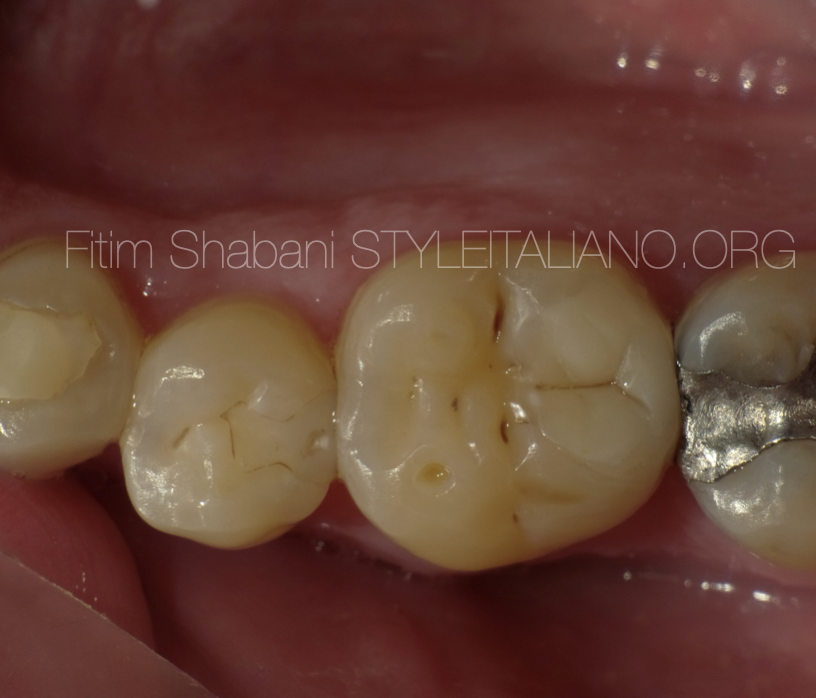
Fig. 12
Recall after one and half year
The patient is without complaints and vitality is positive
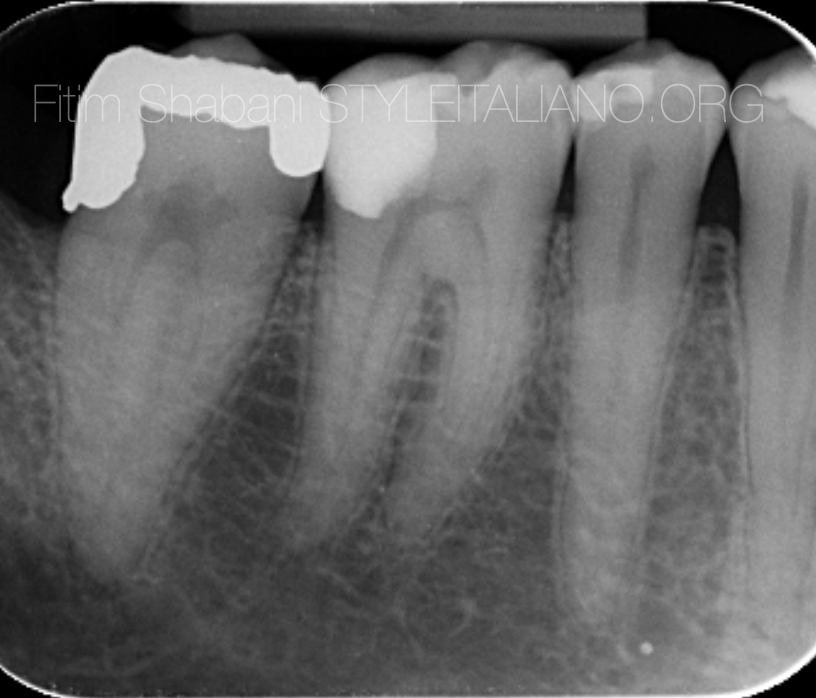
Fig. 13
Xray after one and half year
There are no pathological changes
Conclusions
Before any endodontic treatment we must always consider the possibility of direct coverage of the pulp.
Age of patient, hygiene, localization of the caries, size of pulp exposure and all other clinical and radiograph data should be considered to decide whether to perform direct pulp coverage or endodontic treatment.
All the steps of this procedure are important, but the most important, in ,y opinion, is the isolation of the operative field. I say this because we must try to remove carious masses to the maximum and thus reduce to a minimum the number of bacteria that would penetrate into the pulp cavity, therefore without isolation of the operative field we risk to introduce more bacteria than as had before in the tooth.
Bibliography
- Takashi Matsuo, DDS, PhD, Tadashi Nakanishi, DDS, Hirotoshi Shimizu, DDS, and Shigeyuki Ebisu, DDS, PhD A Clinical Study of Direct Pulp Capping Applied to Carious-Exposed Pulps.
- T.J. Hilton1*, J.L. Ferracane2, and L. Mancl3, for Northwest Practice-based Research Collaborative in Evidence-based Dentistry (NWP) Comparison of CaOH with MTA for Direct Pulp Capping: A PBRN Randomized Clinical Trial
- Harold R. Stanley, LIDS, MS,” Gainesville, Fla. Pulp capping: Conserving the dental pulp-Can it be done? Is it worth it?
- George Bogen, DDS; Jay S. Kim, PhD; Leif K. Bakland, DDS Direct pulp capping with mineral trioxide aggregate
- Johannes Mente, DMD,* Beate Geletneky, DMD,* Marc Ohle,* Martin Jean Koch, MD, DMD, PhD,† Paul Georg Friedrich Ding, DMD,† Diana Wolff, DMD,† Jens Dreyhaupt, DSc,‡ Nicolas Martin, BDS, PhD, FDS,§ Hans Joerg Staehle, MD, DMD, PhD,† and Thorsten Pfefferle, DMD* Mineral Trioxide Aggregate or Calcium Hydroxide Direct Pulp Capping: An Analysis of the Clinical Treatment Outcome
- Ahmad S. Al-Hiyasat, BDS, MScD, PhD; Kefah M. Barrieshi-Nusair, BDS, MS; Mohammad A. Al-Omari, BDS, MScD, PhD The radiographic outcomes of direct pulp-capping procedures performed by dental students A retrospective study

